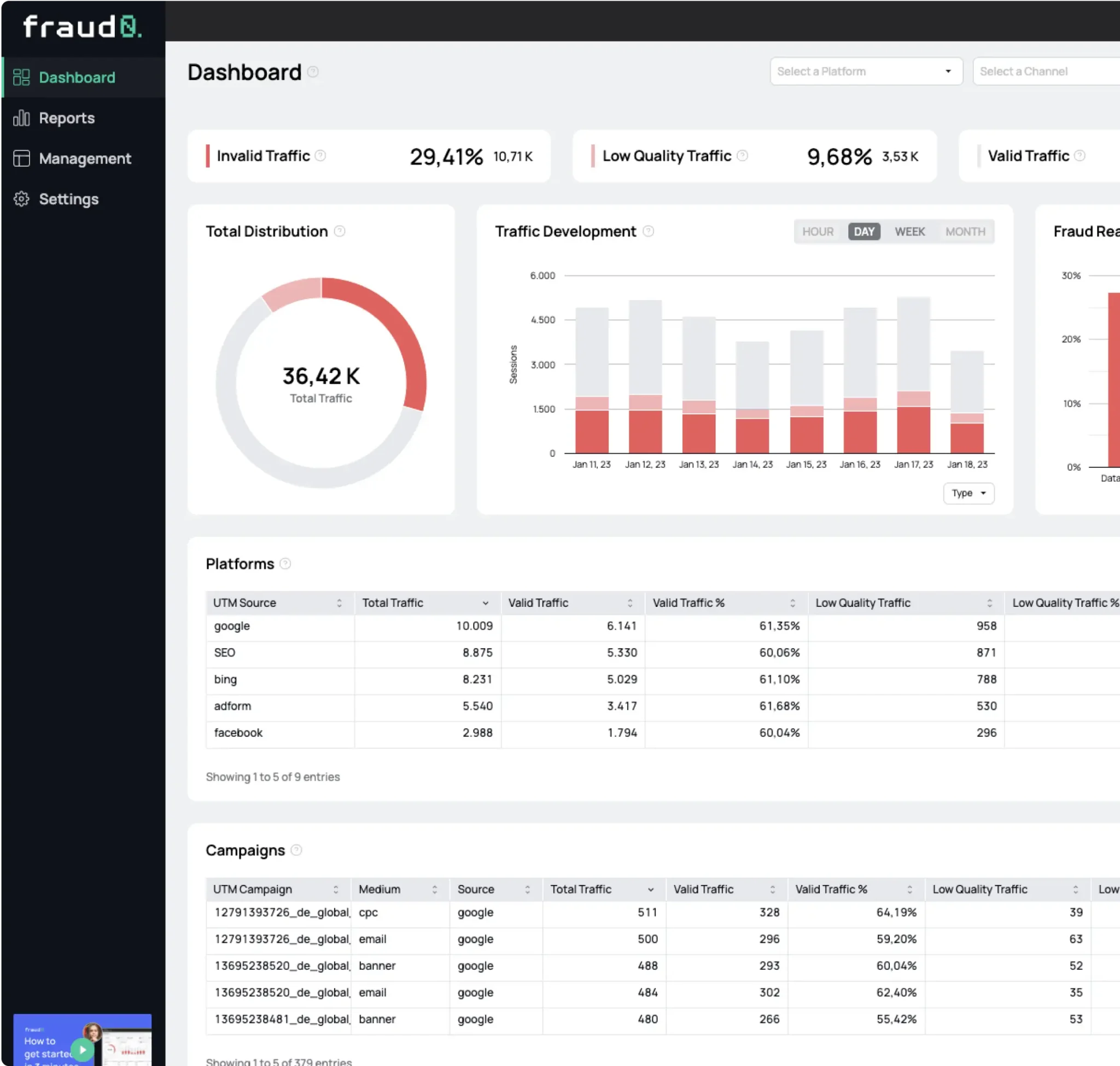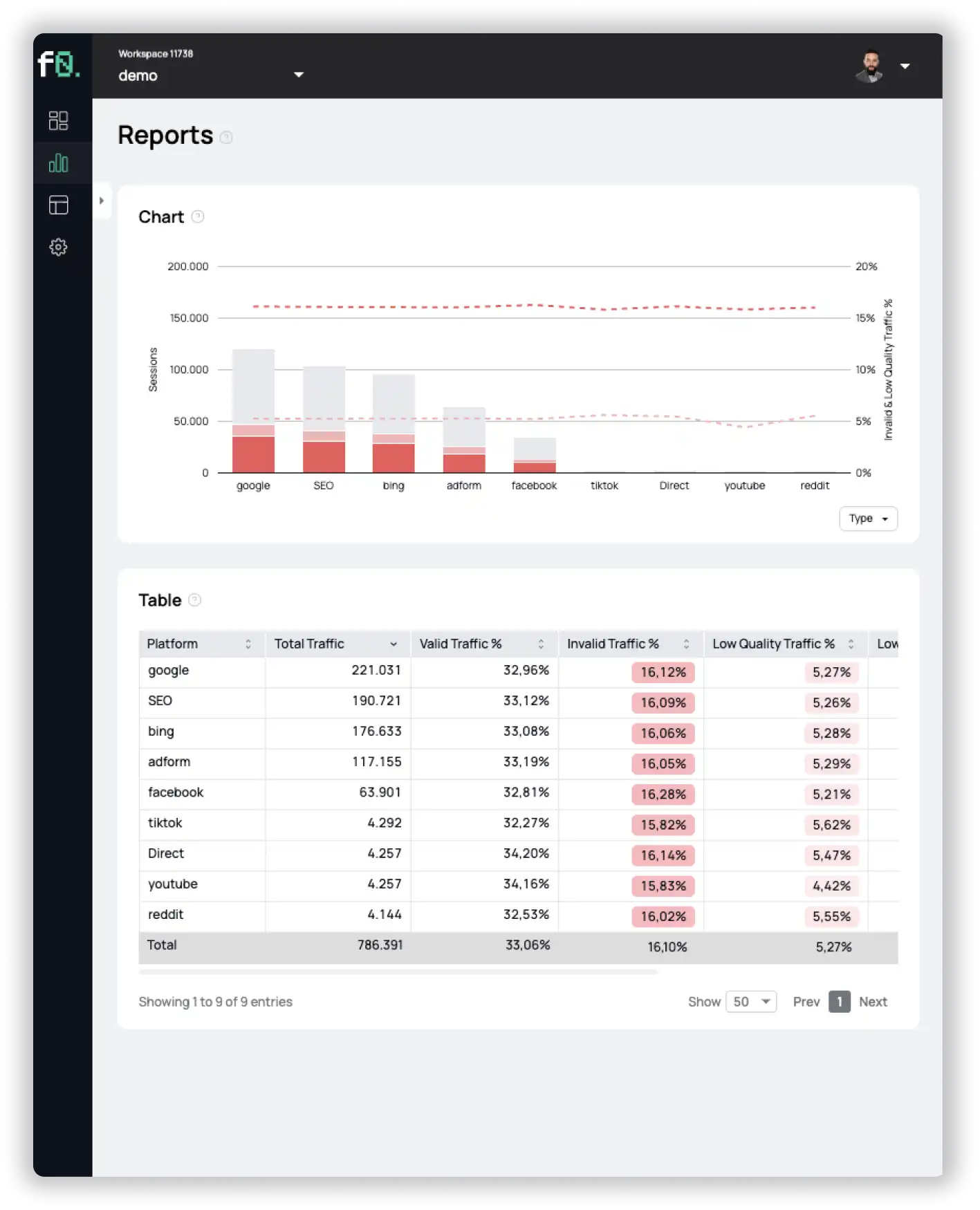- Blog
Ad Fraud Cases in Recent Years (2022–2025)

Oliver Kampmeier
Cybersecurity Content Specialist

Ad fraud isn’t slowing down, it’s evolving. Between 2022 and 2024, investigations uncovered schemes ranging from deepfakes to MFA networks, costing advertisers billions.
What you’ll find here is just the visible tip of the iceberg. For every exposed case, many more remain hidden in the shadows.
2025
Vo1d Malware Botnet Expansion
By early 2025, the Vo1d malware botnet had expanded to infect approximately 1.6 million Android TV devices across 226 countries. These compromised devices were integrated into a botnet used for ad fraud and as anonymous proxy servers, underscoring the global scale and adaptability of such fraudulent operations.
2024
Forbes' 'www3' Subdomain Controversy
In 2024, an investigation by The Wall Street Journal uncovered that Forbes had been operating a subdomain, www3.forbes.com, since at least 2017. This subdomain functioned as a “Made for Advertising” (MFA) site, designed primarily to maximize ad impressions rather than provide substantive content to users.
Deepfake Celebrity Endorsement Scams
In 2024, a criminal network based in Georgia exploited deepfake technology to create fraudulent advertisements featuring fabricated endorsements from celebrities such as Martin Lewis, Zoe Ball, and Ben Fogle. These deceptive ads promoted fake cryptocurrency and investment schemes, deceiving over 6,000 victims across the UK, Europe, and Canada, resulting in losses totaling $35 million.
ERIAKOS Scam Campaign
In April 2024, a sophisticated fraud campaign named “ERIAKOS” was uncovered, involving a network of 608 fraudulent e-commerce websites targeting Facebook users. These fake web shops impersonated popular brands to deceive visitors into providing personal and financial information.
SubdoMailing Ad Fraud Campaign
A massive ad fraud campaign known as “SubdoMailing” was uncovered, exploiting over 8,000 legitimate domains and 13,000 subdomains to distribute up to five million scam emails per day. The fraudsters hijacked abandoned subdomains of well-known companies to send their malicious emails, allowing them to bypass spam filters and exploit existing email authentication protocols like SPF and DKIM.
2023
Malicious Google Play Apps Displaying Ads with Screen Off
In 2023, security researchers uncovered 43 Android applications on the Google Play Store, collectively downloaded over 2.5 million times, that secretly displayed advertisements even when users’ device screens were turned off.
Former Executives of Outcome Health Convicted in $1 Billion Corporate Fraud Scheme
Outcome Health was a Chicago-based health technology company that installed television screens and tablets in doctors’ offices across the United States, selling advertising space on those devices primarily to pharmaceutical companies. In April 2023, three former executives were convicted for engaging in a massive corporate fraud scheme that misled clients, lenders, and investors, resulting in approximately $1 billion in fraudulently obtained funds.
Allegations of Google's Misreporting on Video Ad Viewership
In 2023, a report by advertising research organization Adalytics alleged that Google misled numerous business and government advertisers regarding the viewership of its TrueView video ads on third-party websites and apps. The report claimed that many ads did not meet Google’s own guidelines, including instances where ads were run in small video players in the corner or at the side of the screen, were fully muted, had no actual video content between ads, or ran with little interaction or activation from the user.
Badbox 2.0 Malware Campaign
Badbox 2.0 was a large-scale malware campaign that infected over 1 million off brand Android devices worldwide, including low-cost tablets, connected TV (CTV) boxes, digital projectors, and more.
2022
Google Ad Fraud Campaign Leveraging Adult Content
In 2022, a significant advertising fraud campaign was uncovered, exploiting Google Ads and ‘popunder’ advertisements on adult websites to generate substantial illicit revenue.
Vastflux Ad Fraud Operation
Vastflux was a sophisticated ad fraud scheme that exploited vulnerabilities in the digital advertising ecosystem. First uncovered in 2022, the operation injected malicious code into legitimate ads, allowing fraudsters to stack multiple invisible video ads within a single ad slot. As a result, Vastflux generated up to 12 billion ad requests per day, causing massive financial losses for advertisers.
- Published: September 23, 2025
- Updated: September 23, 2025
1%, 4%, 36%?




